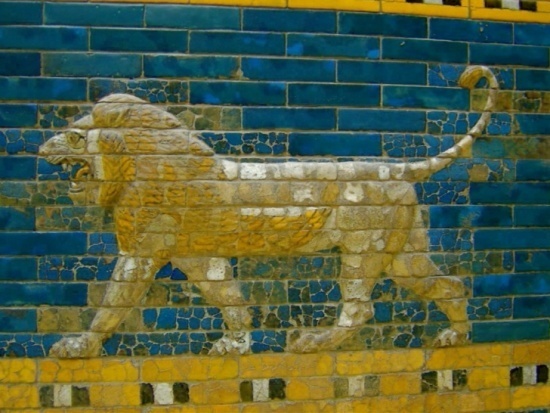"One Like a Son of Man" -- Daniel 7:1-18
 Wednesday, September 27, 2017 at 01:58PM
Wednesday, September 27, 2017 at 01:58PM 
The Thirteenth in a Series of Sermons on the Book of Daniel
The second half of the Book of Daniel is much different from the first half. The first six chapters of Daniel recount the career of the Hebrew prophet including a number of events associated with Daniel and his three Hebrew comrades (Shadrach, Meshach, and Abednego), two Babylonian kings (Nebuchadnezzar and Belshazzar) and one Persian king (Darius the Mede–also known as Cyrus). The second half of the Book of Daniel (chapters 7 through 12) opens with a dramatic vision given by YHWH to Daniel which maps out the next six centuries of ancient near-eastern history. Yet in the following chapters, Daniel continues to recount some of the most fantastic and difficult visions in all the Bible. But the literary hinge between the two halves of Daniel is chapter 7. As one writer puts it, the nature of Daniel’s dramatic vision makes this “the single most important chapter of the Book of Daniel.” Chapter 7 includes what yet another writer describes as the “the key to history.” These are grandiose comments, but after we have spent some time in this chapter, I think you will see why these opinions are appropriate. The vision given Daniel in chapter 7 points us to a mysterious figure–“One like a Son of Man”–who is indeed the key to understanding all of human history.
Daniel’s vision of four strange beasts as recorded in chapter 7, covers the same time frame in human history (the 5th century BC-the 1st century AD) as the vision which YHWH gave previously to Nebuchadnezzar, recounted in Daniel 2. But this vision is YHWH’s revelation of the all-conquering king (Jesus) around whom all of human history ultimately centers. The subsequent visions given Daniel in chapters 8-12 speak of the great empires which arise after Babylon falls (the Persian, Greek, and Roman empires), while also foretelling of the rebuilding of Jerusalem (after the Jewish exiles return home from Babylon), the rise of an Antichrist figure (described as a blaspheming “little horn” who is the arch-enemy of God’s people), before the visions take us forward to the end of the age and the general resurrection when all the dead (believing and unbelieving) are raised bodily on the day of final judgment.
As we return to our series on the Book of Daniel, this week and next, we will explore in some detail the amazing vision given Daniel by YHWH while Belshazzar was in the first year of his reign as king of Babylon–specifically, the year 550 BC, which also happened to be the very same year that a relatively unknown Persian king (Darius) rose to became leader of the Medo-Persian empire (taking the royal name Cyrus), which will conquer Babylon in 539 BC (as we saw in chapters 5-6 of Daniel).
The first half of the Book of Daniel tells the story of Daniel’s life in exile and his service in the royal court, from the time he was kidnaped from his home in Judah (605 BC) until late in his life (539 BC), when he served as a trusted advisor, first to Nebuchadnezzar and then Cyrus. Daniel served the latter toward the end of Daniel’s life, when the Persian king was wrestling with the question, “what to do with the sizable population of Jews living as exiles in Babylon, but who anxious to return to their homeland, rebuild the capital city (Jerusalem) and the temple of YHWH?” The central message throughout the first half of Daniel, is that YHWH is sovereign over all kings and empires, seen in the fact that he gave his prophet Daniel great gifts of the Spirit to protect from harm while in exile, and to interpret the dreams which YHWH gave to the leaders of that very same nation (Babylon) YHWH used to punish his disobedient people (Israel), before bringing down the Babylonian empire because of its on-going persecution of the people of God, along with Babylon’s zeal in worshiping false gods. The first half of Daniel ends with Daniel returning to the royal court near the end of his life, this time serving a Persian king in the period immediately before Cyrus issues his famous decree to allow the Jews to return home.
To read the rest of this sermon, Click Here


Reader Comments